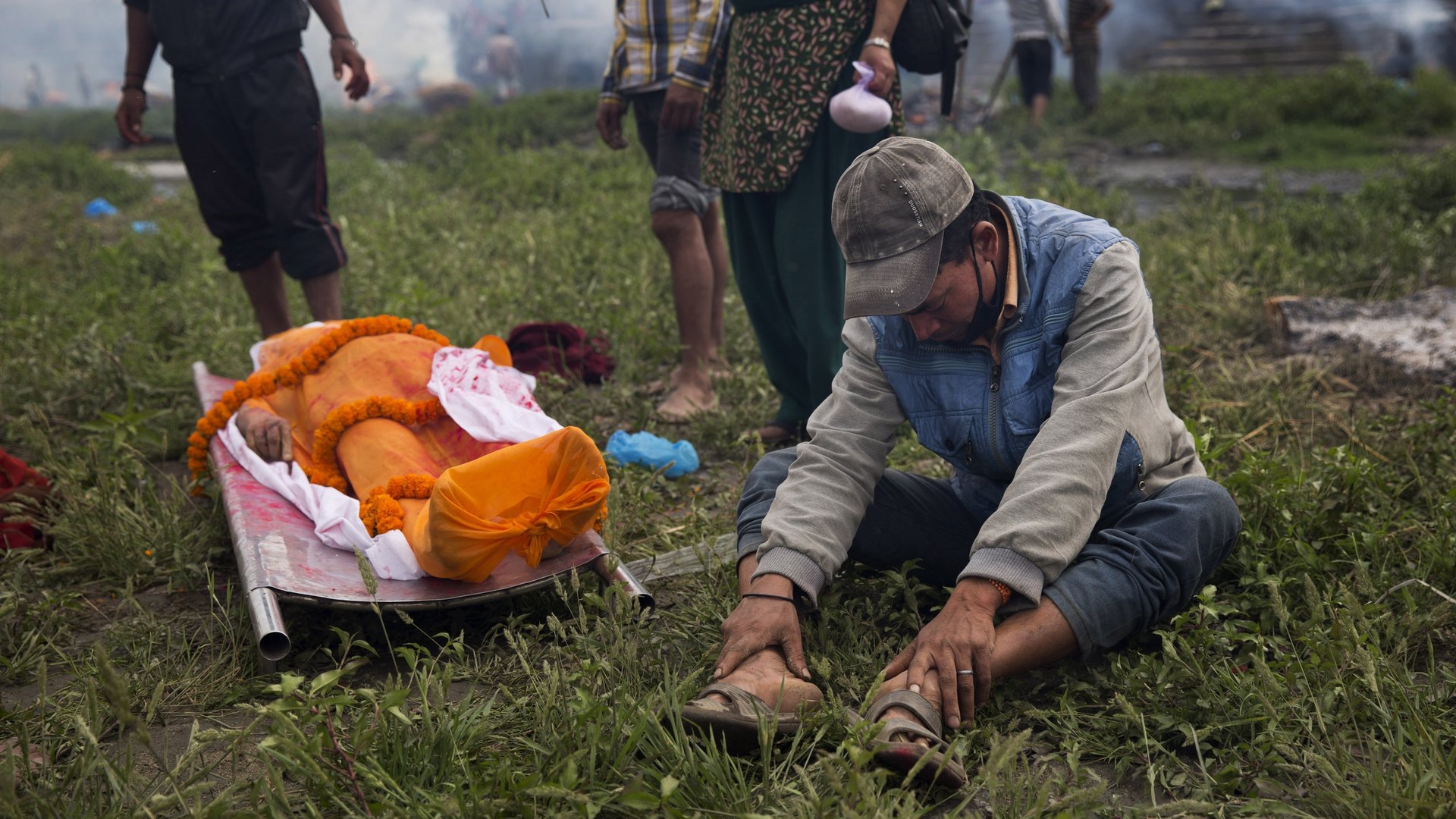Eyewitness photos from the Nepal earthquake
Nepal was hit by aftershocks Sunday from the earthquake that has so far killed at least 2,200 people and injured 5,800. Eyewitness photos, videos, and accounts show the destruction in Nepal’s capital Kathmandu and on Mount Everest as survivors continue to fear for their safety and rescuers work to free victims from debris.


Nepal was hit by aftershocks Sunday from the earthquake that has so far killed at least 2,200 people and injured 5,800. Eyewitness photos, videos, and accounts show the destruction in Nepal’s capital Kathmandu and on Mount Everest as survivors continue to fear for their safety and rescuers work to free victims from debris.
Here are some images and accounts from people on the scene.
Rescuers are digging through the rubble of collapsed buildings for survivors, writes ABC News’ Siobhan Heanue:
People throughout Kathmandu are sleeping outside in case of more aftershocks, according to Sanjoy Majumder, India correspondent for BBC news:
Makeshift tent camps are also popping up throughout the city, according to sustainable development advisor Kashish Das Shrestha and author Thomas Bell:
The danger of falling debris has prompted Nepalese people to walk down the middle of near-deserted roads, says writer Kanak Mani Dixit:
Some of the injured are receiving medical attention in outdoor hospitals, writes a blogger with the Twitter handle “Saloyka”:
While other Nepalese identify the bodies of their friends and family members:
Long lines of people were waiting at the Kathmandu airport to evacuate, reports Nirmal Ghosh of the Straits Times.
A photographer who was at Mount Everest base camp at the time of the quake sent photos documenting the approach of an overpowering avalanche:
An eyewitness video shows the avalanche heading toward the camp:
Eyewitnesses recorded the damage to Nepal’s many historic temples:
Even as Kathmandu continues to be rocked by powerful tremors, some are already looking toward the long recovery for the city:
Freelance writer Donatella Lorch summed up the confusion and generosity in the aftermath of the quake in the New York Times:
Neighbors were helping neighbors. Those with motorcycles were ferrying cheap plastic canvas for tents from shops that remained open. Many people stopped us, and asked if we needed food or water. Several invited us to spend the night with them.
This is why I love Nepal. People here help one another because they know the government often can’t. They reach out to one another, and they persevere. They open their shops, because what else can one do when the world is upside down?